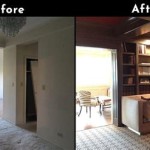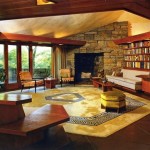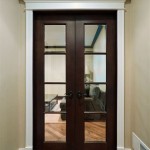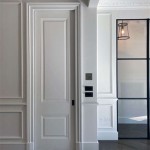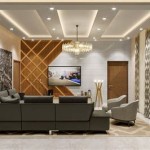What’s My Interior Design Style? Exploring the Mr. Kate Middleton Quiz
Determining an individual's interior design style can be a convoluted process. The sheer number of styles, combined with personal preferences and evolving trends, often leaves homeowners feeling overwhelmed. Fortunately, various tools and resources exist to help navigate this challenge, including quizzes designed to identify dominant design aesthetics. One such offering, though not officially associated with any royal figure, frequently shares a moniker reminiscent of a notable personality: the “Mr. Kate Middleton” style quiz. This article will explore the concept of interior design quizzes, delve into the functionality and purpose of quizzes like the aforementioned one, and examine the benefits of understanding one's design inclinations.
The purpose of interior design quizzes is to provide a starting point for individuals embarking on decorating or renovating their living spaces. These quizzes typically present a series of visual or text-based questions that assess preferences related to colors, furniture styles, textures, architectural elements, and overall ambiance. The responses are then analyzed to determine which design style or combination of styles best reflects the individual's aesthetic sensibilities. These quizzes should be viewed as guides rather than definitive declarations, acknowledging that personal style is nuanced and multifaceted.
While no definitive "Mr. Kate Middleton" interior design quiz exists officially, the name suggests a focus on classic elegance with a modern twist, perhaps drawing on the perceived style of the Duchess of Cambridge. This implicit connection underscores a broader point about interior design quizzes: they often leverage familiar cultural touchstones to make the abstract concept of design more relatable and accessible. By associating design styles with recognizable figures or concepts, these quizzes can pique interest and facilitate engagement.
It's important to approach online quizzes critically. While they can be valuable tools, relying solely on a single quiz result to define one's style can be limiting. Design is a fluid and evolving process. Experimentation and a willingness to explore different styles are crucial for creating a truly personalized living space. Consider quizzes as a springboard for further research and exploration rather than an absolute authority.
Understanding the Mechanics of Interior Design Quizzes
Most interior design quizzes operate on a similar principle: presenting a series of carefully curated questions designed to elicit information about an individual's preferences. These questions typically fall into several categories. Visual-based questions might present a series of images depicting different living rooms, bedrooms, or kitchens, asking the participant to select the option they find most appealing. Text-based questions might inquire about favorite colors, preferred materials (e.g., wood, metal, fabric), or desired ambiance (e.g., cozy, modern, minimalist). By analyzing the patterns in these responses, the quiz can identify recurring themes and align them with specific design styles.
The algorithmic backbone of these quizzes varies in sophistication. Some may rely on a simple scoring system, assigning points to each answer based on its association with a particular style. Others employ more complex algorithms that consider the interplay between different preferences and attempt to identify subtle nuances in taste. Regardless of the underlying mechanics, the goal remains the same: to translate subjective preferences into objective design recommendations.
The accuracy of an interior design quiz hinges on several factors, including the quality of the questions, the comprehensiveness of the style database, and the effectiveness of the analytical algorithm. A poorly designed quiz may yield inaccurate or misleading results, while a well-designed quiz can provide valuable insights into one's design preferences. It is advisable to take multiple quizzes from different sources to gain a more comprehensive understanding of personal style.
Benefits of Identifying Your Interior Design Style
Understanding one’s interior design style offers a myriad of advantages, impacting both the aesthetic appeal and the functional utility of a living space. Firstly, it provides a framework for making informed decisions about furniture, décor, and color palettes. Rather than randomly selecting items based on fleeting trends, individuals can curate a cohesive and harmonious environment that reflects their personal sensibilities. This, in turn, can lead to a more satisfying and comfortable living experience.
Secondly, identifying one’s style can streamline the decorating process. By narrowing down the range of options, it becomes easier to focus on specific styles, materials, and vendors. This can save time, reduce decision fatigue, and prevent costly mistakes. Imagine, for example, someone drawn to a minimalist aesthetic. By understanding this preference, they can avoid purchasing ornate or overly decorative items that would clash with their overall vision.
Furthermore, a well-defined interior design style can enhance the value of a property. A thoughtfully decorated home that reflects a cohesive aesthetic can be more appealing to potential buyers. While personal taste is subjective, a professionally executed design that adheres to established principles can create a sense of sophistication and refinement, thereby increasing the perceived value of the property.
Beyond the tangible benefits, understanding one's design style can also contribute to a greater sense of personal well-being. Living in a space that reflects one's personality and values can promote feelings of comfort, relaxation, and happiness. A well-designed home can serve as a sanctuary from the stresses of daily life, providing a space where individuals can recharge and reconnect with themselves.
Interpreting the Results: Beyond the Label
Once an individual has taken an interior design quiz and received their results, the next step is to interpret those results in a meaningful way. It's crucial to remember that design inclinations seldom fit neatly into predefined categories. More often than not, individuals exhibit a blend of styles, drawing inspiration from various sources and adapting them to their unique circumstances.
The label assigned by the quiz should be viewed as a starting point for further exploration rather than a rigid constraint. For example, if the quiz suggests a "modern farmhouse" style, it's essential to understand the specific elements that define this aesthetic, such as natural materials, rustic textures, and a clean, minimalist color palette. Individuals can then selectively incorporate these elements into their own homes, adapting them to their personal preferences and the architectural features of their space.
Another important consideration is the existing context of the home. A design aesthetic that works well in a modern apartment may not be suitable for a historic Victorian house. It's important to consider the architectural style of the building, the size and layout of the rooms, and the existing furniture and décor when making design decisions. The goal is to create a harmonious and cohesive environment that complements the space rather than clashes with it.
Ultimately, the most successful interior design projects are those that reflect the personality and lifestyle of the homeowner. While professional guidance can be invaluable, the final result should be a space that is both aesthetically pleasing and functionally appropriate for the individual who inhabits it. Understanding one's design inclinations is a crucial step in achieving this goal, providing a foundation for creating a home that truly feels like a reflection of oneself.

Page 4 The Glam Pad

How To Get An A List Home On Diy Budget Daily Mail

Nancy Lancaster Inspired Decor Interiors Living Room The Glam Pad

Our House S Colors Em For Marvelous

Matthew Carter Cky Interior Designer The Glam Pad

Mcmillen Interior Design English Country Style Chintz Library Green Forrest Dark Lacquer Painted The Glam Pad

Page 4 The Glam Pad

Our Living Room Rug Em For Marvelous

Prince William Kate Middleton Are Depending On Their Inner Circle

Nicolas Fairford English Interior Designer Living Room Botanicals The Glam Pad
Related Posts

